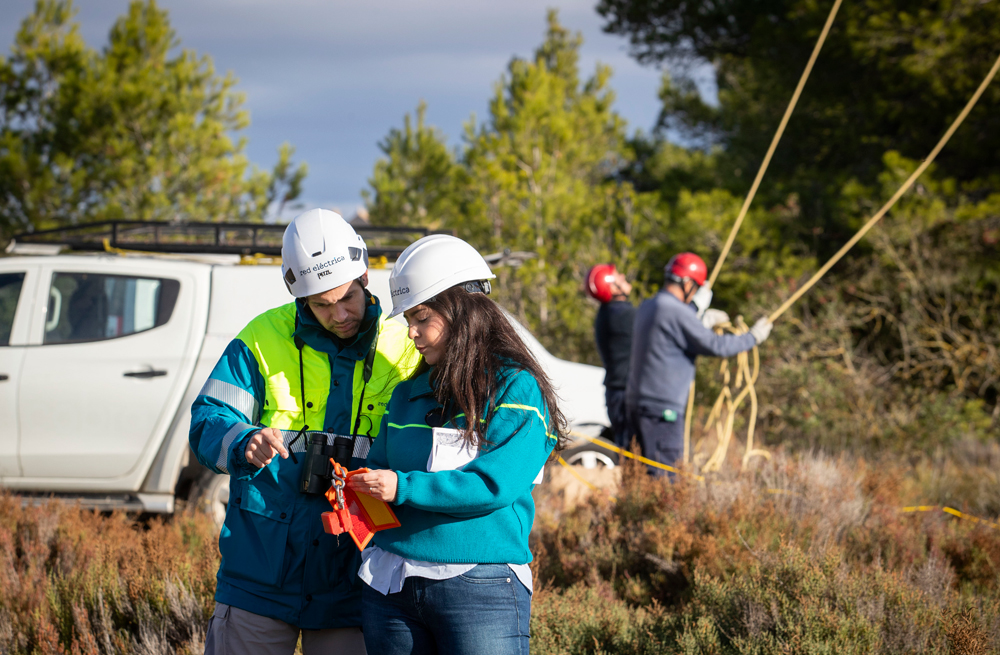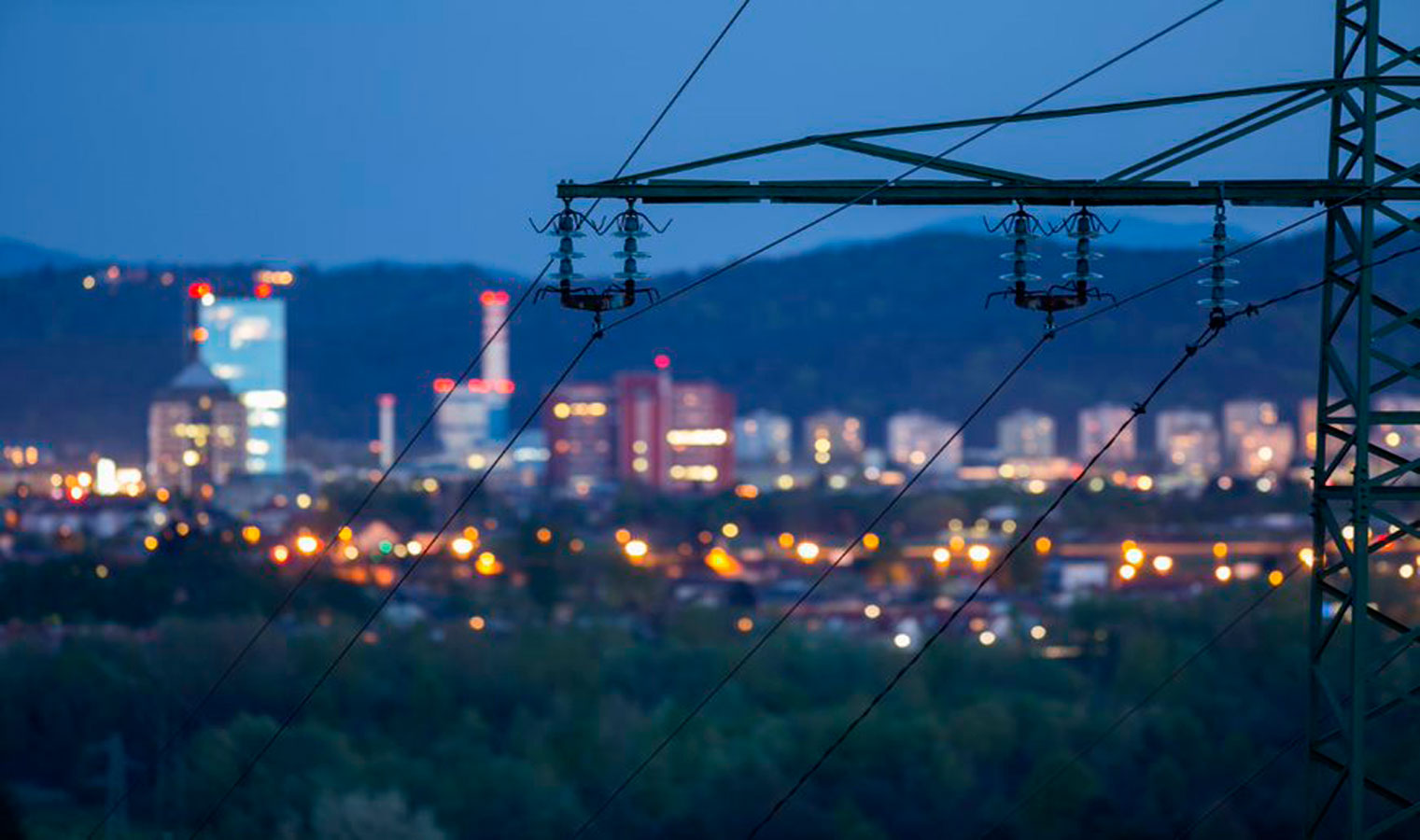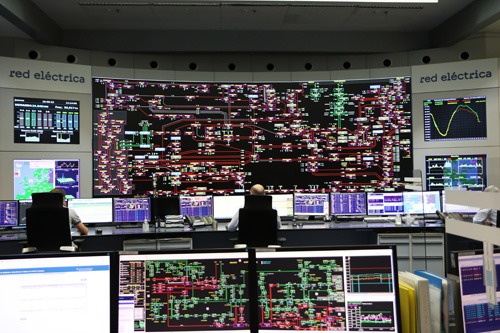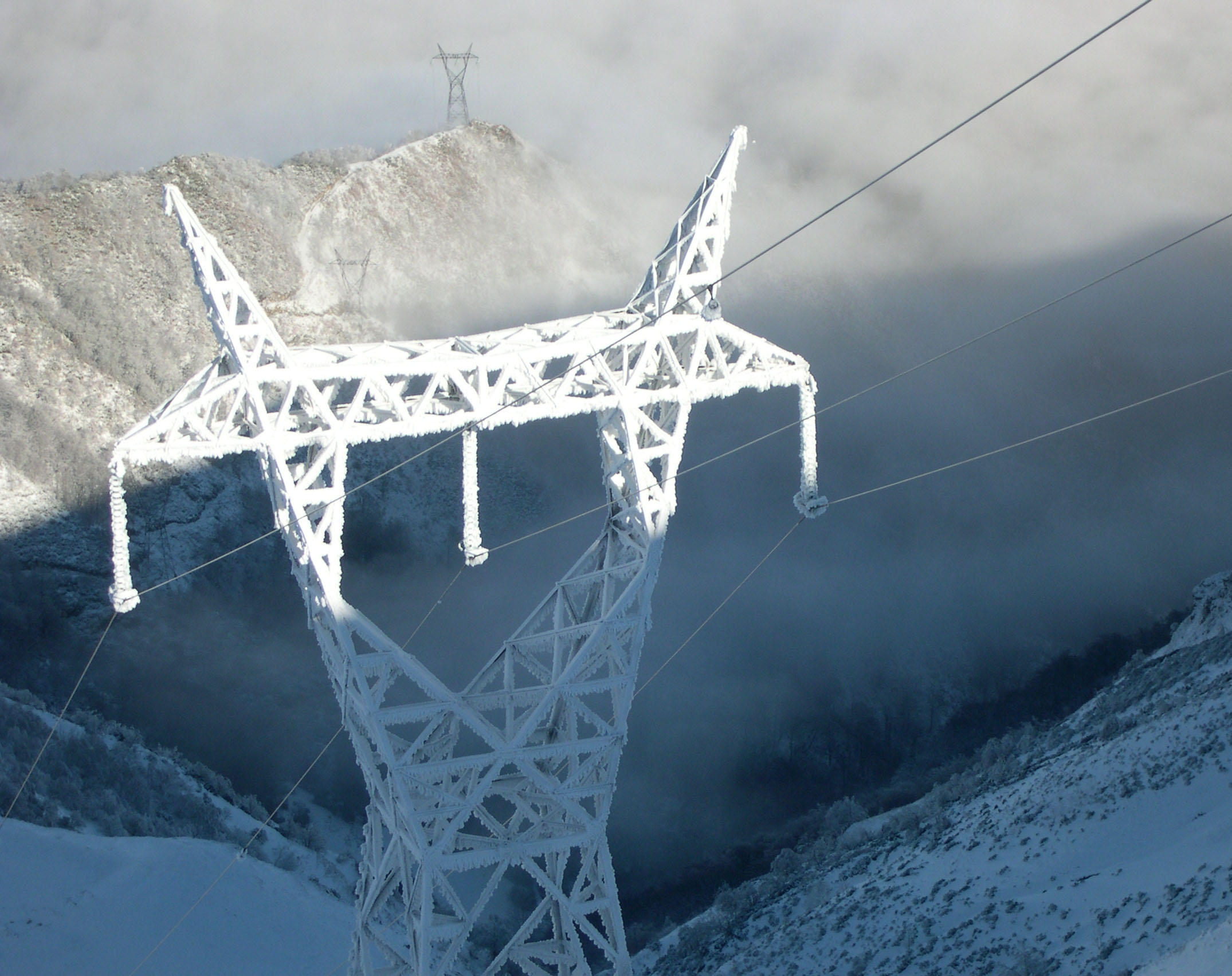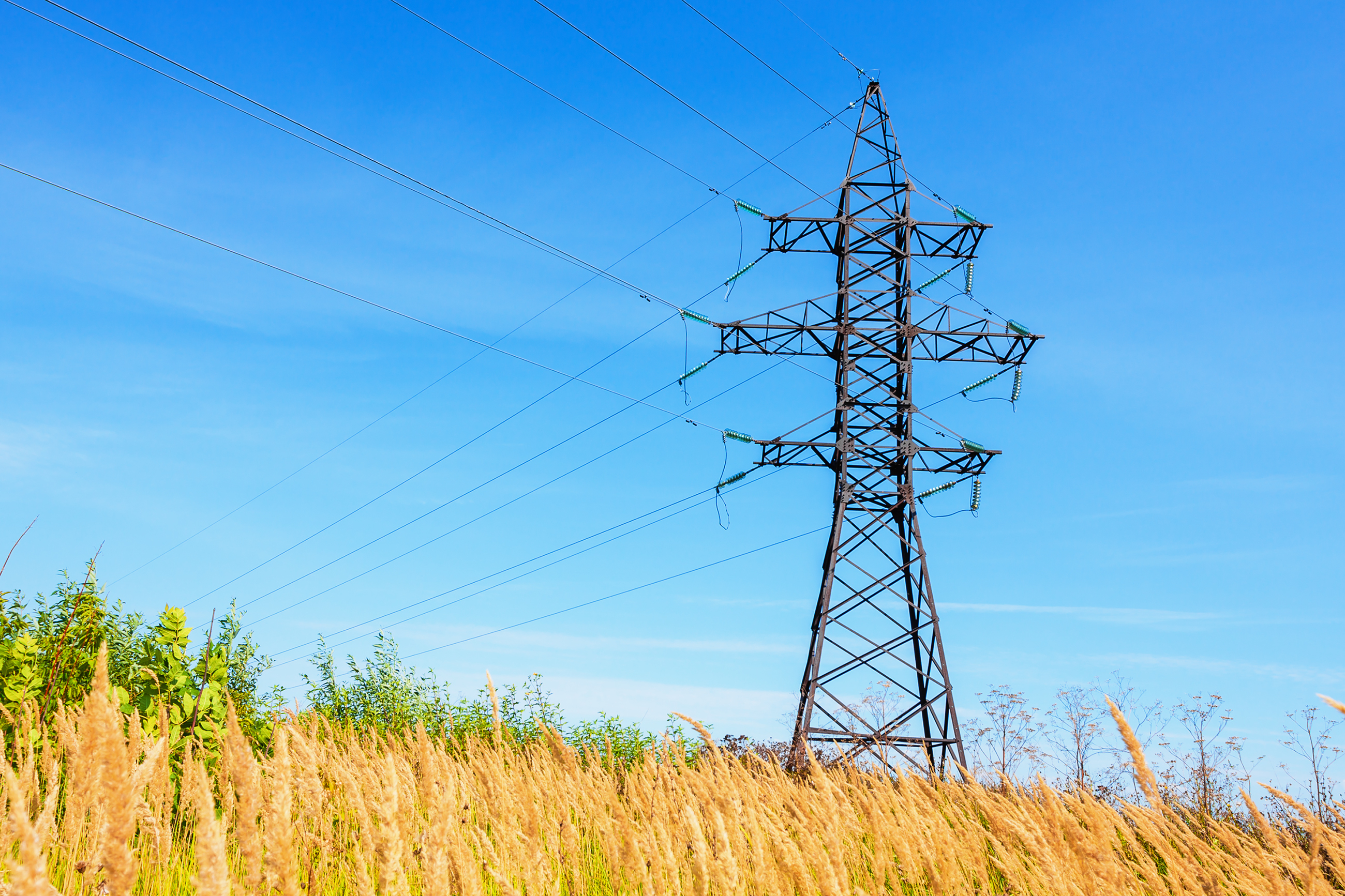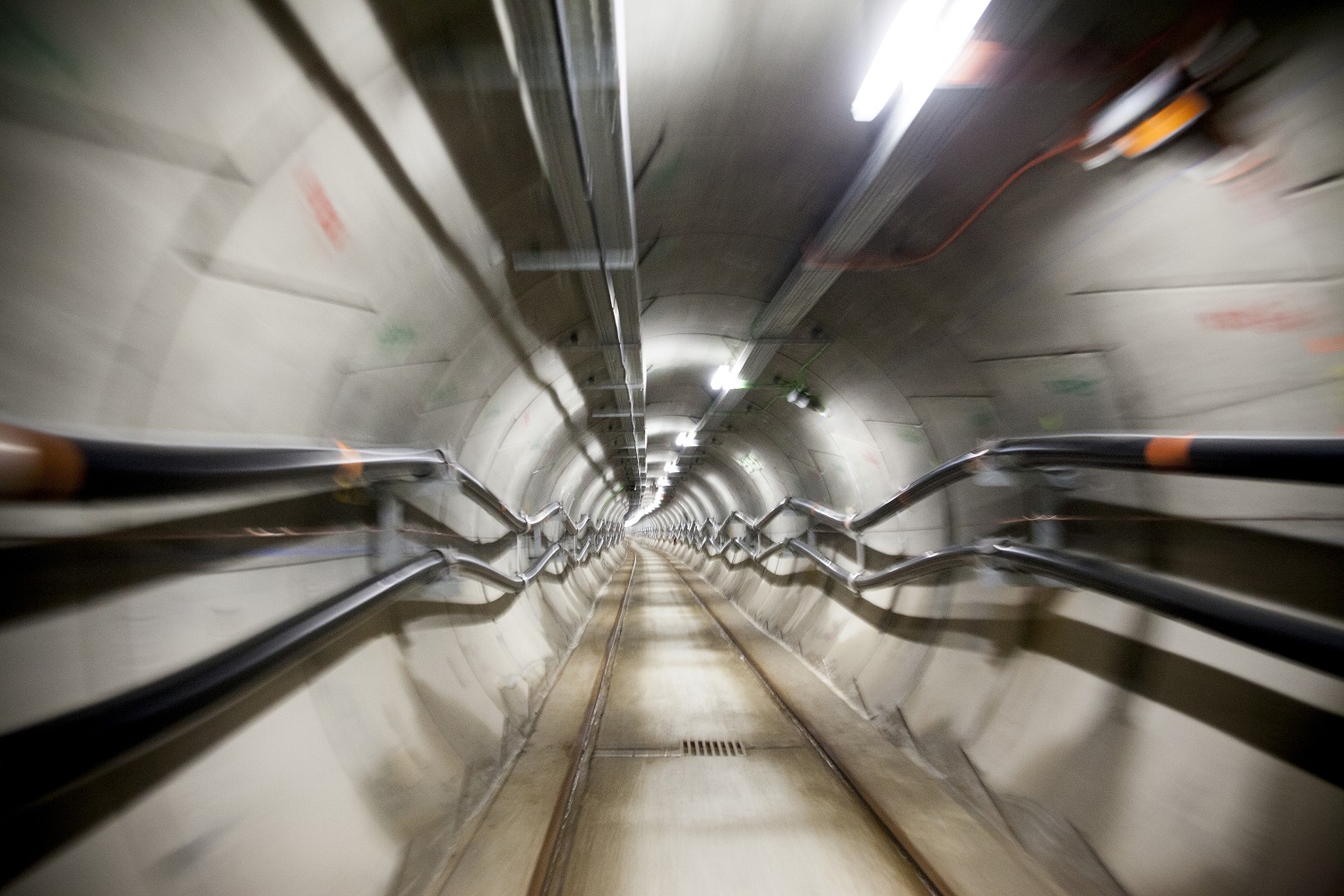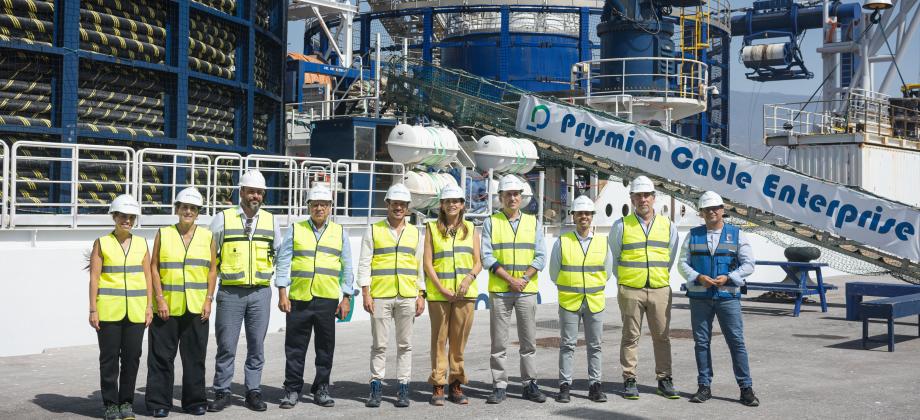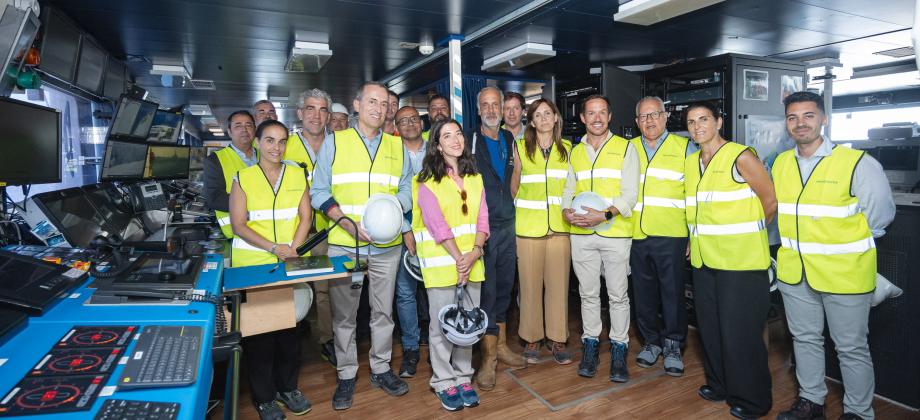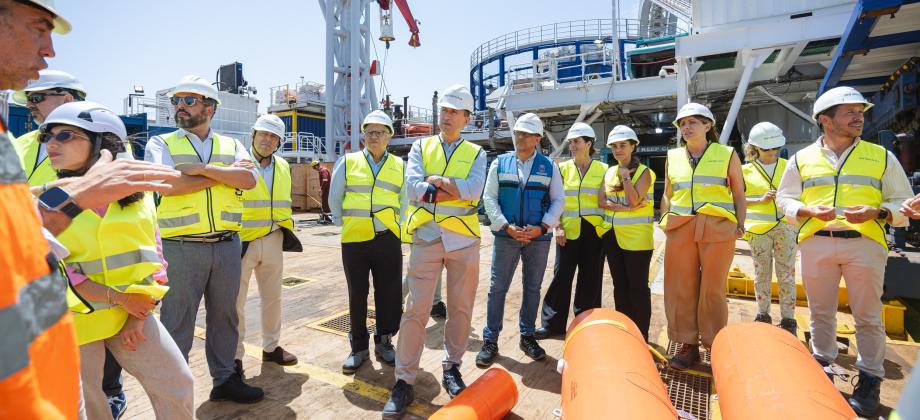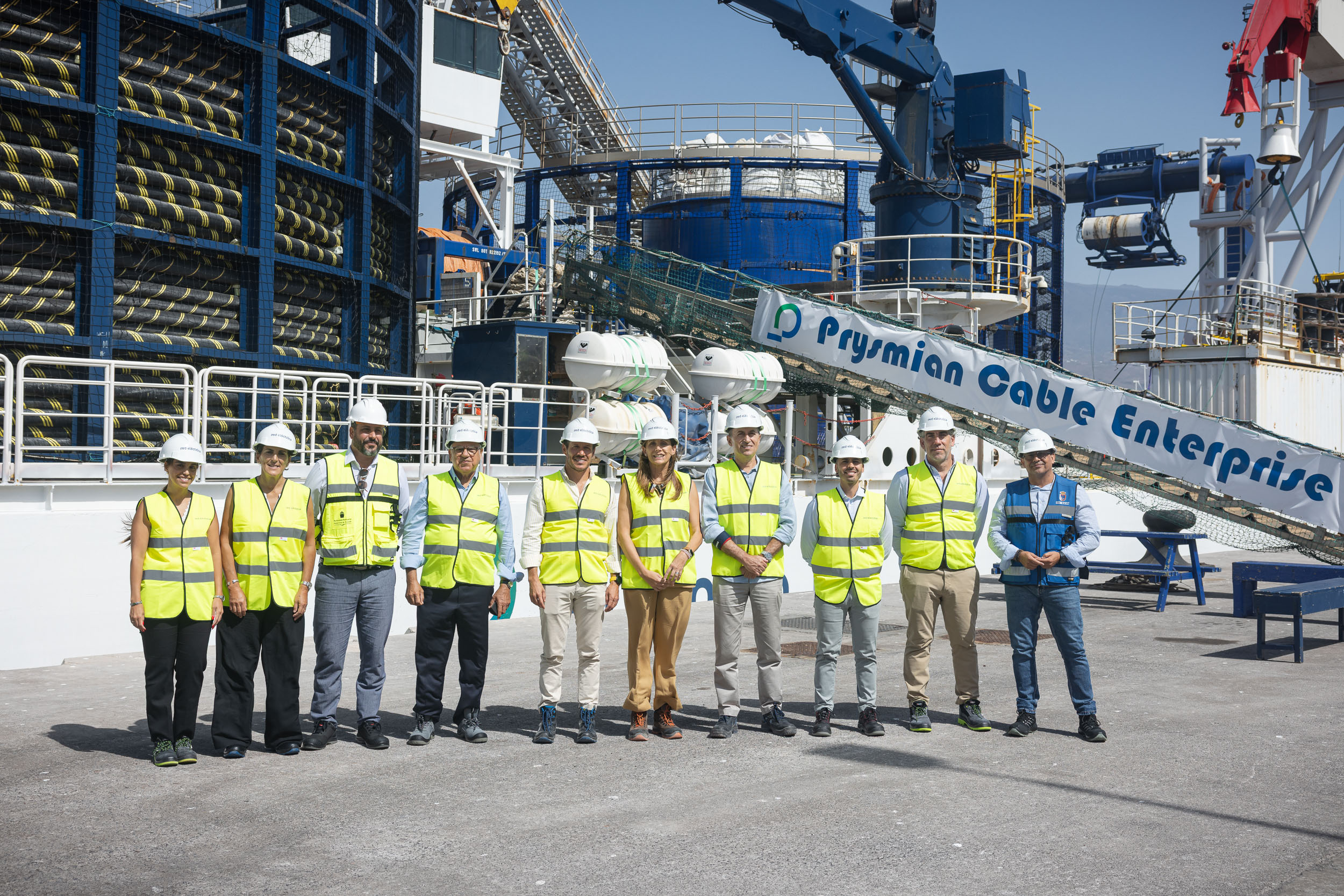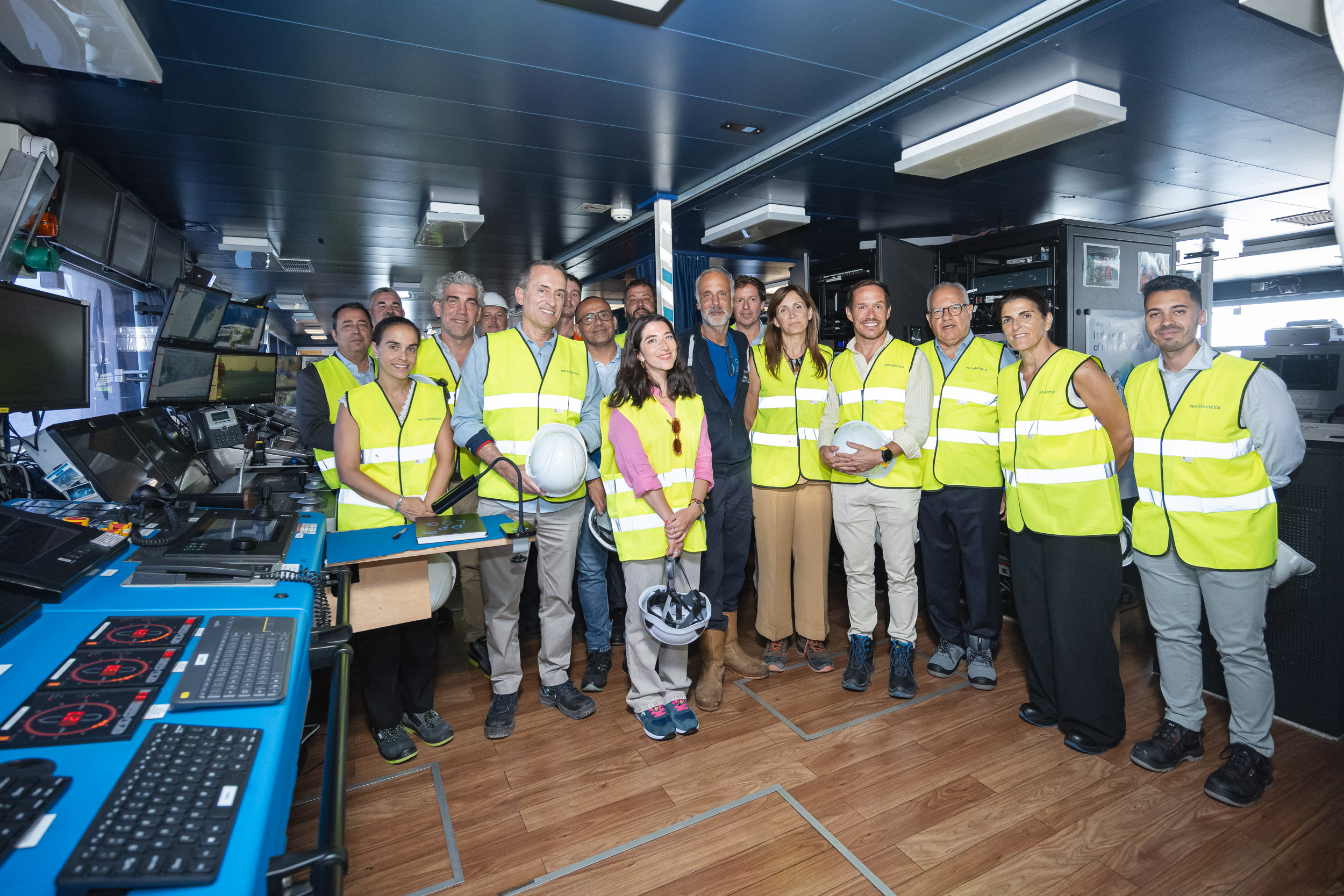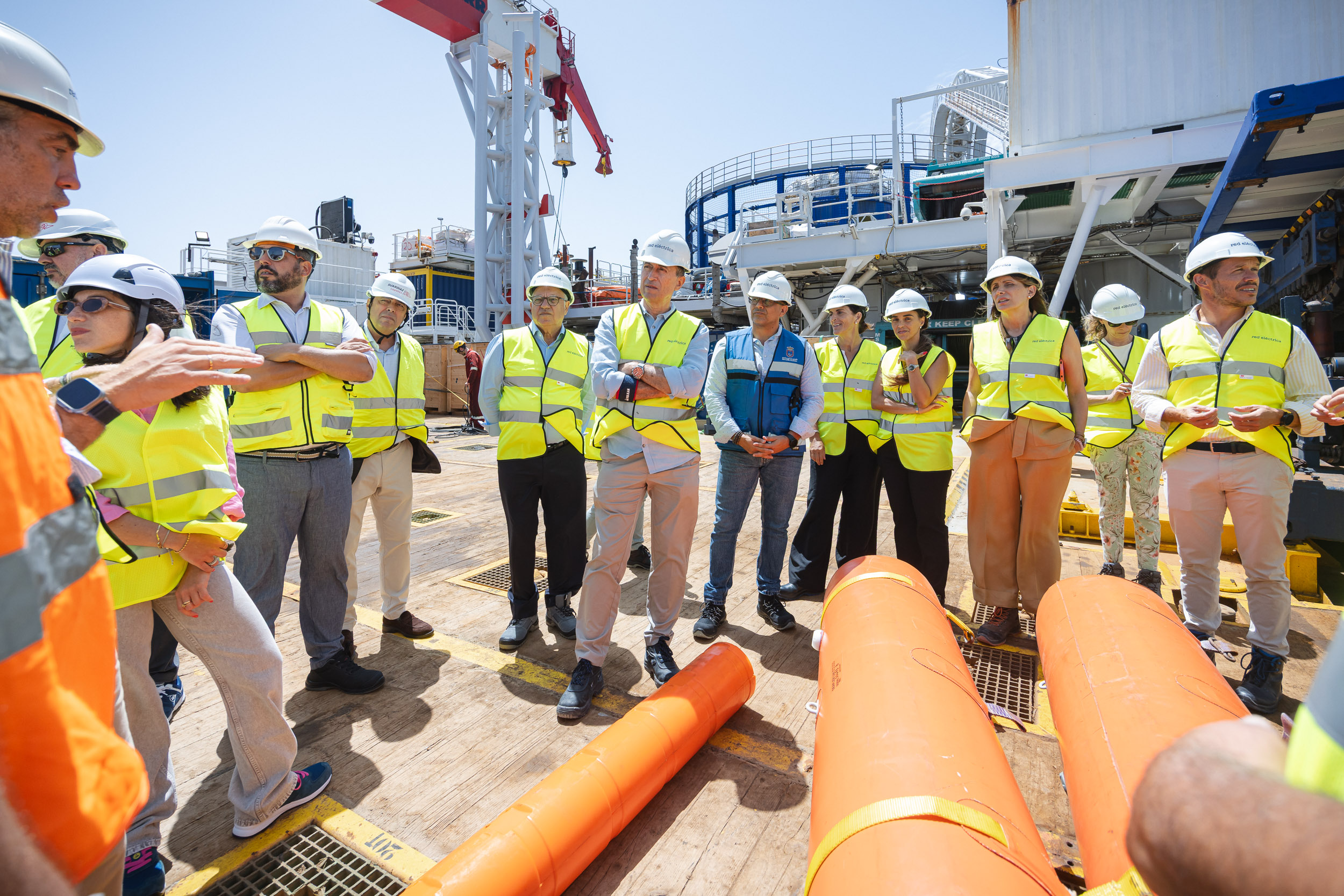For 40 years, we've been driving our country's economic and social progress. Four decades shaping Spain.
The cable-laying ship Cable Enterprise docks at Granadilla port to lay the submarine cable between Tenerife and La Gomera
- The vessel, which will deploy the world’s deepest three-phase AC cable, reaching depths of up to 1,145 metres, is one of the few ships in the world equipped for this type of operation.
- The Cable Enterprise will begin laying the first 36 km circuit of the interconnection on the seabed at the end of August, with completion expected by the end of 2025.
The cable-laying vessel Cable Enterprise has docked at Granadilla port in southern Tenerife to finalise preparations for laying Red Eléctrica’s submarine power cable, which will connect the islands of Tenerife and La Gomera and is considered the world’s deepest three-phase AC cable.
During a visit to the ship, local and regional officials—including Mariano Hernández Zapata, regional minister of Ecological Transition and Energy of the Canary Islands Government, Casimiro Curbelo, President of the Council of La Gomera, José Miguel Ruano, second vice president and island minister of the Presidency of the Council of Tenerife; Ana Dorta, mayor of Guía de Isora; Marcos Antonio Rodríguez Santana, acting mayor of Granadilla; Alberto Hernández, director general of Energy of the Canary Islands Government; and Airam Díaz Pastor, deputy director of the Tenerife Port Authority—confirmed its readiness for the project. They were accompanied by Red Eléctrica’s project manager Pablo García Celaá and the company’s manager on the Canary Islands, Ainara Irigoyen.
Red Eléctrica, the Redeia company responsible for the operation and transmission of the electricity system, is finalising work on the submarine electricity interconnection between Tenerife and La Gomera, with completion expected this year.
For this operation, Red Eléctrica will rely on one of the most advanced vessels, now visible at the port of Tenerife. The Cable Enterprise is part of Prysmian’s fleet, a world-leading company in cable manufacturing, supply, and design. The vessel is designed to operate autonomously and remain stable even in adverse weather conditions. Moreover, it is capable of simultaneously laying and burying cables while handling loads of up to 180 tonnes.
At the end of August, the Cable Enterprise will begin laying the first circuit of the interconnection from the island of La Gomera. This key infrastructure is included in the current planning.
The double-circuit 66 kV underground-submarine transmission line, with a capacity of 50 MVA per circuit, spans around 36 km underwater at a maximum depth of 1,145 meters and features two onshore segments in La Gomera and Tenerife. Its completion is expected by late 2025.
Mariano H. Zapata, regional minister of Ecological Transition and Energy of the Canary Islands Government, described the project as ‘a global milestone and a key achievement for energy planning in the archipelago.’ He highlighted that work on this state-of-the-art installation ‘is part of the Regional Ministry’s energy strategy, which seeks to guarantee supply on the islands through various measures, such as their interconnection.’ According to the minister, this initiative will help the Canary Islands ‘to continue to progress toward greater penetration of renewable energies and, therefore, toward our decarbonisation goals.’
He also emphasised that this strategic project, which meets the highest environmental care standards, is the result of collaboration between the government bodies and companies involved. It is ‘driven by the Canary Islands Government and this Regional Ministry to ensure that this installation is completed as soon as possible, providing greater energy security to the island of La Gomera.’ He further explained that ‘the laying of this cable complements ongoing work at the El Palmar (La Gomera) and Chío (Tenerife) substations, which will complete the interconnection.’
For her part, Ainara Irigoyen, Redeia’s manager in the Canary Islands, stated that ‘the submarine electricity interconnection between the two islands represents a major step forward in the energy transition, as it will provide higher quality and more reliable energy supply, as well as greater efficiency and decarbonisation in the electricity systems of Tenerife and La Gomera.’ She also pointed out the technological challenge posed by the 36 km distance and the cable’s depth, reaching 1,145 meters below sea level.
Casimiro Curbelo, president of the Council of La Gomera, noted that ‘today’s visit to the cable-layer responsible for installing the electricity interconnection between Tenerife and La Gomera is evidence that the project is progressing on schedule. Before the end of 2025, we will have this strategic infrastructure connecting Chío with El Palmar, ensuring greater security and stability in the electricity supply. This interconnection is a long-awaited milestone and a firm step toward modernising our energy system.’
He stressed that ‘this interconnection opens the door to a more sustainable, resilient model that promotes the integration of renewable energies and meets the real consumption needs of the public.’ ‘The project aligns with the commitments made by the island government in terms of energy sustainability, including a recent agreement between the Council and the Canary Islands Government to define Acceleration Areas for Renewables and plan new projects,’ he added.
José Miguel Ruano, second vice president and regional minister of the Presidency of the Council of Tenerife, said the collaboration ‘strengthens the islands’ shared commitment to modernise and enhance electricity connectivity, which is particularly beneficial for La Gomera by guaranteeing its electricity supply.’ He added that Tenerife ‘remains committed, in collaboration with other entities, to strengthening energy generation on the island through the emergency measures already underway. The aim is to have a resilient system that responds to the public’s needs.’
For his part, Airam Díaz, deputy director of the Santa Cruz de Tenerife Port Authority, noted that ‘our ports play a vital role in supporting service diversification in our community and driving positive economic impact in the Canary Islands.’ From this perspective, ‘hosting this vessel at the port of Granadilla is essential to consolidate this dock as a logistical and technical hub for such operations, in such a strategically important sector as energy.’
Download

